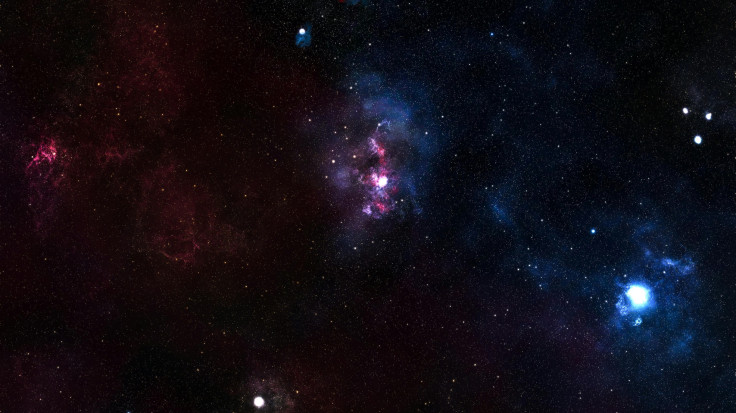3I/ATLAS Mystery Deepens: Avi Loeb Detects 12 Anomaly As Comet 'Doesn't Behave' Naturally
Harvard's Avi Loeb found the 12th anomaly in the high-speed interstellar comet 3I/ATLAS.

The vast, cold darkness of interstellar space has sent a messenger, but this celestial visitor refuses to follow the rules of our cosmic neighbourhood. The comet known as 3I/ATLAS has become a source of both obsession and frustration for astronomers, its journey through our solar system revealing a complex series of unexplained behaviours.
Now, the mystery deepens even further: a new report suggests that Harvard astrophysicist Avi Loeb has identified a staggering 12th unexplained anomaly in the comet's already bizarre movement.
This latest discovery has intensely heightened the level of curiosity, turning a fascinating astronomical subject into a high-stakes puzzle that could redefine what we know about objects from other star systems.

The Galactic Outsider: What Makes Comet 3I/ATLAS Truly Different
Most comets we observe originate from our own solar system, spending their history safely orbiting within the predictable boundaries of the Kuiper Belt or the Oort Cloud. Their movement and behaviour, governed by solar physics, normally follow discernible and predictable patterns. 3I/ATLAS, however, is profoundly different.
The comet does not originate from our solar system; it comes from interstellar space, entering our system on an extremely long, unidentified path. It is moving significantly faster than previous interstellar objects, possessing a hyperbolic orbital eccentricity of 6.139, which is far greater than 1I/'Oumuamua's (e=1.2) or 2I/Borisov's (e=3.4).
Because it emanated from outside the solar system, scientists firmly believe it carries clues about places far beyond our reach. The comet has been exhibiting some unusual changes in brightness, speed, and direction. Crucially, a few of these changes did not align with what scientists typically expect from a standard, Sun-warmed comet.
For space enthusiasts and professionals alike, each anomaly simply adds more mystery to an object that already doesn't behave like most comets we know.

The 12 Anomalies of 3I/ATLAS: Avi Loeb and the Unexplained Patterns
The perplexing patterns exhibited by the interstellar visitor are why researchers, including Avi Loeb, have been carefully referring to these deviations as 'anomalies'. Loeb, famous for his studies on unusual interstellar objects, has been diligently following 3I/ATLAS for months.
With each one, the comet appears to become increasingly interesting to study. Among the most prominent anomalies documented are the comet's 'non-gravitational acceleration' (an extra push beyond gravity's pull), its unexpectedly high nickel-to-cyanide ratio, and the observation of at least seven complex jets emanating from its nucleus, including sunward-pointing 'anti-tails'.
According to the latest report, Loeb has discovered another unusual pattern in the comet's movement, marking the 12th anomaly recorded to date. Given that Loeb is a renowned expert in the study of interstellar objects, and considering he previously discussed concepts related to unusual space objects, interest in his new observation is naturally generated.
For now, this 12th anomaly doesn't really point to a concrete conclusion. As stated in the report, in simple terms, it means that 'something is happening with 3I/Atlas that scientists cannot yet fully explain'. This lack of clarity is due to the unusual physical structure and composition of the object itself.
The peculiar movements could be due to several reasons: its unique composition, unknown materials on its surface, or simply the unconventional way sunlight interacts with this object originating outside of our system. Currently, nobody can say for sure, necessitating further detailed study.

The Race Against Time: Why Studying 3I/ATLAS is Critical
The difficulty in definitively explaining the comet's movements only evidences why interstellar objects are of such great importance. They effectively 'bring information from places far beyond our solar system, places which we may never reach with spacecraft'.
With each new detail, scientists are learning more than just about this comet, but also about what objects from outside of our solar system are like, giving us a precious glimpse into distant stellar nurseries. The comet is travelling at speeds up to 246,000 kilometres per hour (153,000 miles per hour) and reached its closest point to the Sun (perihelion) on October 29, 2025.
The bottom line for the current astronomical investigation is to gather as much information as possible before the comet travels beyond range once more. Interstellar objects are fast movers, and once they are out of our solar system, that might be our only chance to study them.
Learning more about 3I/ATLAS might provide insight into the formation of objects outside our solar system, and could also help researchers understand whether these objects follow the same physical rules as the ones we see closer to home.
Each unusual pattern gives scientists one more clue to study. The next key opportunity for detailed observation will be around mid-December 2025, when 3I/ATLAS makes its closest—though safely distant—pass near Earth at approximately 270 million kilometres.
The interstellar visitor 3I/ATLAS is a high-speed, cosmic messenger, carrying secrets from star systems light-years away. With Harvard's Avi Loeb documenting a staggering 12 anomalies, this object represents a genuine scientific mystery—a chance to test the very laws of physics outside our solar neighbourhood.
As the comet makes its closest approach near Earth in mid-December, pay attention to the astronomical community; every piece of data gathered in this narrow window is crucial to unlocking the deep space secrets carried by 3I/ATLAS.
© Copyright IBTimes 2025. All rights reserved.



















